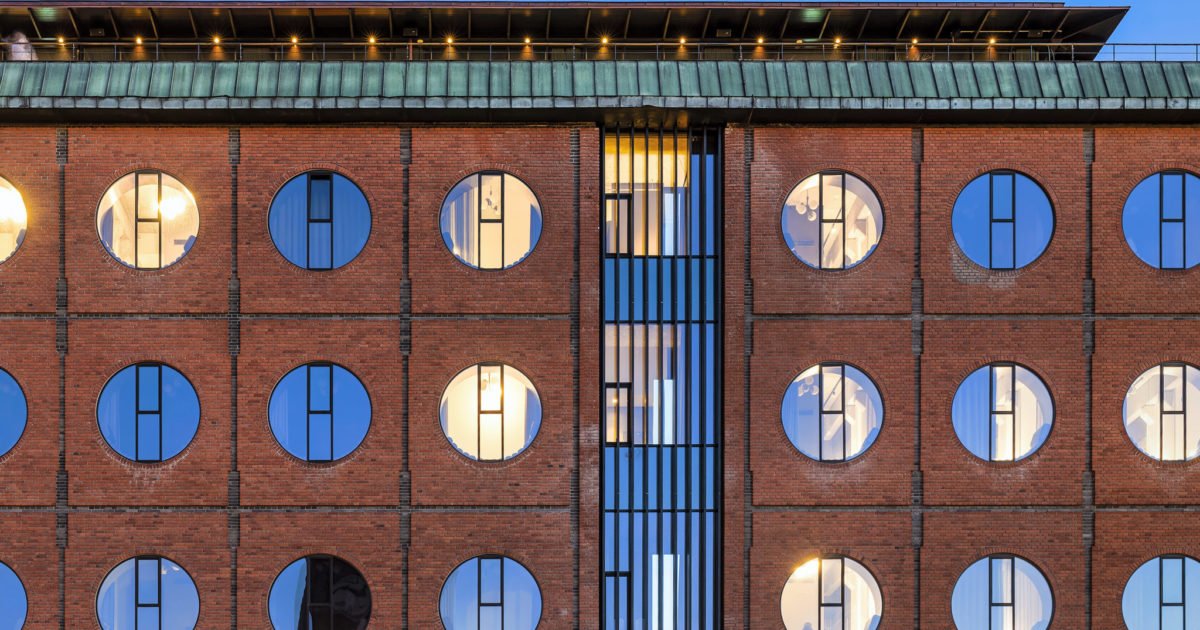
PUBLICATION
Building within the Safe Operating Space
Nordic Insights on Sustainable Construction
Text: Malin Zimm
Research and interviews: Angelica Åkerman and Pernille Martiny Modvig
The construction industry is at a crossroads. With its responsibility for 40% of global carbon emissions and 50% of raw material use, the direction of this sector plays a huge role in the fight against climate change and the need to rethink how we build has never been more urgent.
This publication explores the challenges and opportunities facing the construction sector as it works to stay within planetary boundaries. Through interviews with architects, policymakers, developers, and other experts, we look at ways to lower emissions, reduce resource use, and secure biodiversity both on- and off site while securing good housing for a changed demographic in the Nordics. Since 2018, the Nordic countries have been leading this shift, working to align building regulations, promote life cycle assessments (LCA), and set emission limits for new construction. But real change requires more than just reporting requirements and technical solutions—it calls for a full transformation of how we build and live.
In this publication, we cover important topics like making the most of existing buildings, focusing on renovation over new buildings, using sustainable materials, and designing spaces that encourage eco-friendly living. We also look at the crucial role of policy and legislation in guiding this transformation, ensuring that construction practices protect both people and the planet.
With sharp insights from some of the brightest minds in the field, we explore how we can live and build within the safe operating space:
Signe Wenneberg, Climate activist, speaker, author and journalist.
Louise Heebøll, architect MAA, founder and owner of Louise Heebøll ApS, founder of the association Del Hus and V!GØR.
Peter Ullstad, architect, founder of Codesign.
Pasi Aalto, Centre Director NTNU Wood, Department of Architecture and Technology, Norwegian University of Science and Technology.
Anna Denell, Chief Sustainability Officer, Vasakronan, Chairwoman of “Håll Nollan” (Zero Accidents in the Construction Industry), advisory board member of Mistra Carbon Exit, LFM30 and Fria Byggakademien.
Søren Nielsen, Architect and Former Partner, Tegnestuen Vandkunsten, now Professor at Aarhus School of Architecture.
Malin Kock Hansen, Senior Adviser, DOGA.
Borghildur Sölvey Sturludottir, City Architect, Reykjavik.
Caroline Bergmann, Coordinator of designed living environment, Västra Götalandsregionen.
Arne Høi, Head of Institute, Institute of Architecture and Culture, Royal Danish Academy.
Mads Peter Laursen, CEO, Institut for (X), Aarhus.
Arja Renell, Dry Collective.
Marwa Dabaieh, Adjunct professor at Aalborg university and docent and associate professor at Malmö University.
Marta Bohlmark, Partner, Gaia Arkitektur.
Ulrika Stenkula, Partner, Gaia Arkitektur.
Anders Larsson, Researcher and teacher at the Department of Landscape Architecture, Planning and Management, SLU Alnarp.
Kristiina Lång, Research Professor, Natural Resources Institute Finland (Luke).
Thomas Hahn, Associate professor, principal researcher, PHD, Stockholm Resilience Centre, Stockholm University.
Katrina Wiberg, Landscape architect, Associate Prof, Aarhus School of Architecture, Arkitektskolen Aarhus.
Kai Reaver, Head of Architecture & Chief Advisor Norwegian Architecture Association NAL.
Matti Kuittinen, Associate Professor, Department of Architecture, Aalto University.
Harpa Birgisdottir, Professor, BUILD, Aalborg University.
Nel Jan Schipull, Architect MAA, DGNB-Auditor, Ph.D., partner at Vandkunsten Architects.
Dani Hill-Hansen, Reduction Roadmap, Sustainable Design Engineer and Architect at EFFEKT, project manager and team member of the Reduction Roadmap initiative.
Ruth Schageman, President of the Architects’ Council of Europe (ACE).
The text was written by Malin Zimm based on interviews by Angelica Åkerman and Pernille Martiny Modvig.
